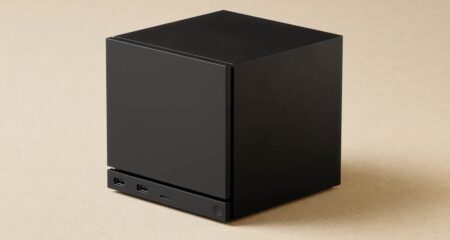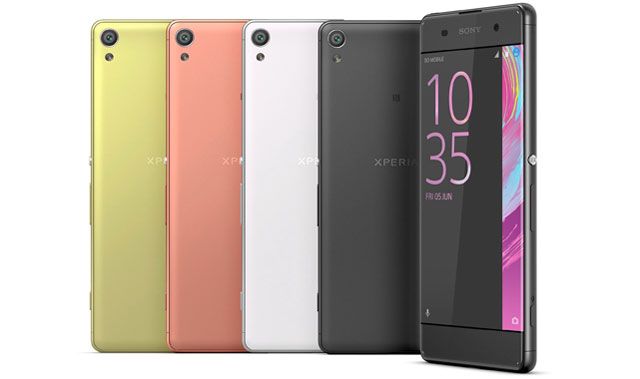
The 2016 Mobile World Congress in Barcelona proved to be the ideal stage for smartphone makers to introduce a slew of new products.
Sony was among them, presenting its new Xperia X range of next-generation smartphones, with the Xperia X touted as the new midrange model, the Xperia X Performance stepping up as the expensive, high-end device, and the Xperia XA as the new budget phone.
All three devices feature a 5-inch display and look almost identical from the outside. On the inside, however, the differences are marked, from processor to RAM and from screen resolution to camera sensor and battery capacity.
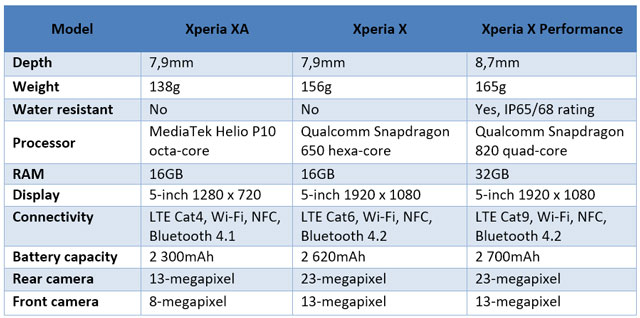
According to Sony, the Xperia X Performance model will not be launched in South Africa. The local market will, however, get the newly announced 4,5-inch Xperia X Compact and Xperia XZ smartphones. These two models, announced at IFA in Germany earlier this month, should reach South African stores somewhere during the fourth quarter of 2016.
Design: sleek and minimalist
Although the Xperia XA (recommended retail price: R5 999) is positioned as an entry-level device, it doesn’t come across like one. Sony designed the phone with a sleek and smooth-edged, almost minimalist look, in a sturdy encasement. The rear camera, for instance, doesn’t protrude like with a lot of other modern-day smartphones. Instead, it is elegantly integrated into the rear side of the case.
The phone does have that characteristic Sony all-round square appearance, though. Its only weak point is the small flap where the Sim and microSD slots are located — this particular part of the device feels fragile and is a bit of a hassle to put back in place.
Something that immediately stands out is the fact that it has almost no side bezels, unlike a lot of previous Sony smartphones, ultimately adding to the XA’s overall premium look and feel. As a result, the Xperia XA’s screen is almost edge-to-edge. The inherent downside to this, however, is that the XA lacks a fingerprint-reader on the side, which is a feature the more expensive Xperia X and X Performance do have on board.
Screen and cameras: mixed bag
The device houses a relatively low-resolution 5-inch IPS-LCD screen able to display 1 280×720 pixels for a pixel density of 294ppi. The higher-end Xperia X models, with the exception of the 4,5-inch Xperia X Compact, all feature full HD 1 920×1080 displays. Although this does result in slightly crispier looking images and text, it also has a negative impact on battery consumption.
Despite the XA’s relatively low display resolution, image quality is still quite good. It can’t really compete with its more expensive counterparts, but brightness and contrast levels are high enough to be pleasant. Even when used outdoors, the Xperia XA automatically turns up all levels a notch to compensate for direct sunlight. There is a tiny bit of brightness loss, and contrast shift, at some extreme viewing angles, though.
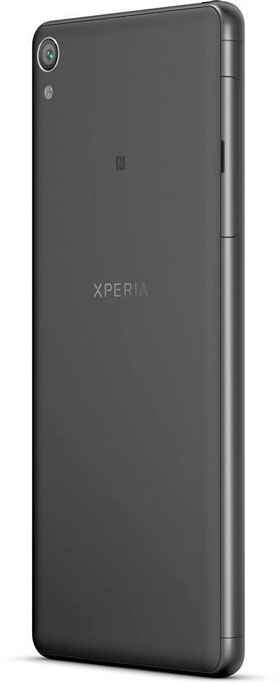 In the camera department, where Sony also produces its own array of imaging sensors, the Xperia XA is a mixed bag. The front-facing 8-megapixel camera, great for some selfies or Skype-calls, is surprisingly good. The rear 13-megapixel camera, on the other hand, fails to impress. Its phase detection and autofocus features, as just two of many examples, leave a lot of room for improvement. There is some lag and ultimately image quality is not great, especially in low-light conditions.
In the camera department, where Sony also produces its own array of imaging sensors, the Xperia XA is a mixed bag. The front-facing 8-megapixel camera, great for some selfies or Skype-calls, is surprisingly good. The rear 13-megapixel camera, on the other hand, fails to impress. Its phase detection and autofocus features, as just two of many examples, leave a lot of room for improvement. There is some lag and ultimately image quality is not great, especially in low-light conditions.
Hardware and performance: no high flier
Sony’s Xperia XA features the least impressive main processor within the brand’s new product range. The 28nm MediaTek MT6755 (Helio P10) runs at a maximum of 2GHz and uses eight ARM-architecture Cortex A53 cores, combined with an ARM Mali-T860 GPU for dedicated graphical performance. There’s also 2GB of RAM and 16GB of storage space, of which Android steals about 4GB. You can expand the XA’s capacity up to a maximum of 128GB with a microSD card (sold separately).
The XA features all the bell and whistles you might come to expect from a current smartphone, even entry-level models. It supports 4G, Wi-Fi, Bluetooth, near-field communication and GPS, and houses a whole range of on-board sensors such as a digital compass and gyroscope. By default, it comes preinstalled with Android 6.0 Marshmallow and features Sony’s own skin, including the usual array of bloatware on top of that. For a comprehensive list of all the Xperia XA’s specifications, see here.
I ran a small set of benchmarks to determine how the XA’s hardware, and Sony’s Android implementation, impacted performance. Results were compared to those of the Xperia X, the Xperia Z5 and the Xperia Z5 Compact. The AnTuTu benchmark clearly shows the XA is unable to keep up with the other models. GFXBench, which primarily focuses on 3D graphics, ended up with the same conclusion.
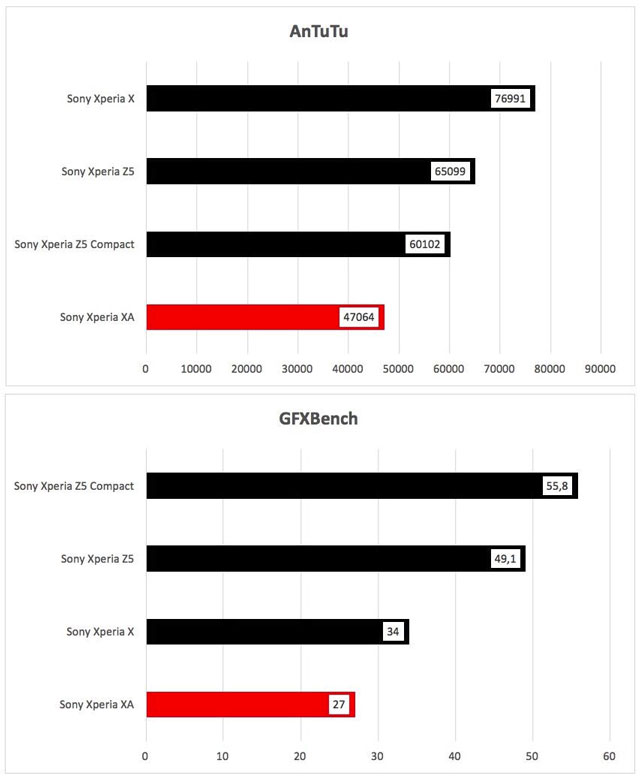
In the end, the Xperia XA just isn’t designed for processor-intensive applications such as 3D games and photo/video editing. It is, however, comfortably fast enough to deliver smooth day-to-day tasks like browsing, communicating and handling of various documents.
Battery life: below expectations
With mediocre performance, you might expect somewhat longer battery life. Unfortunately, that is not the case with the Xperia XA. Sony claims the phone might last for up to two days on its fully charged, 2 300mAh battery, under optimal circumstances.
Reality, however, has proven far from that. In practice, the phone has trouble reaching the end of an eight-hour workday.
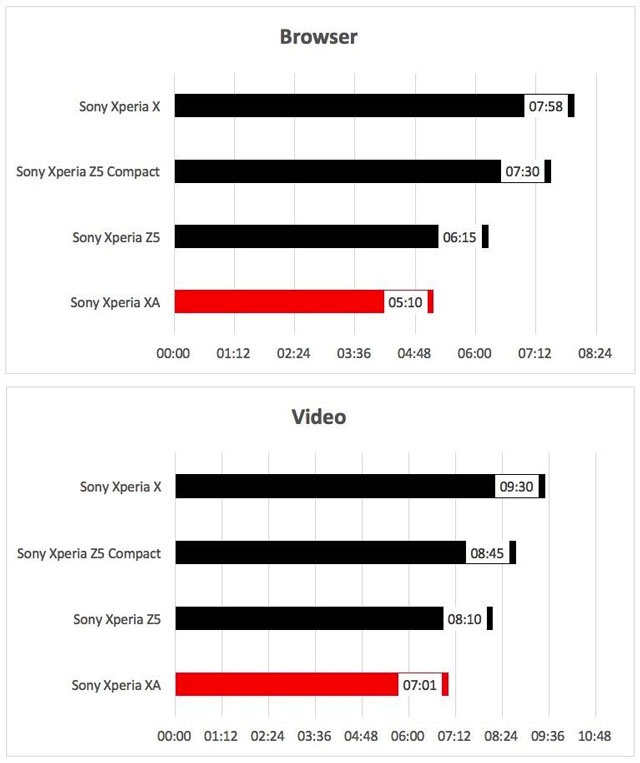
Conclusion
Purely from a design point of view, the Xperia XA is a pretty good fit. From a technical perspective, it falls short. Performance is decent, although at the bottom end of the spectrum. Battery life, on the other hand, is inexcusably poor.
The Xperia XA is, however, a good example to an industry that is pushing 2K and even 4K displays that a screen doesn’t have to feature an excessive number of pixels to still be pleasing to look at.
The front camera turned out to be surprisingly good, while the rear camera just isn’t up to spec.
Ultimately, the XA’s most interesting feature is its low price point. By Sony standards, that is. It gets an overall 6/10. — (c) 2016 NewsCentral Media


